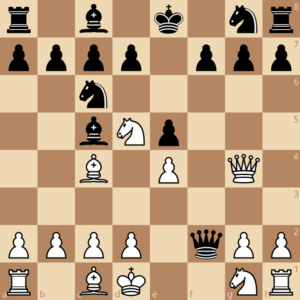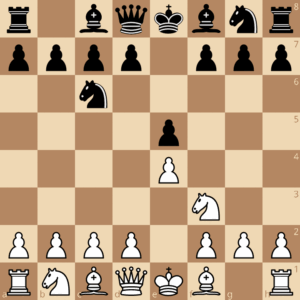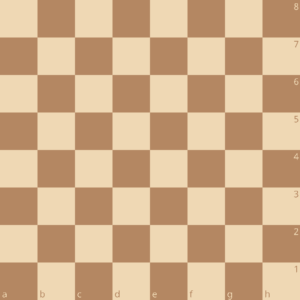With all the pieces’ movement you learned previously, there are some special moves in chess. Castling is the most distinct among them. It is the sole move in chess which incorporates two pieces simultaneously – the King and a Rook. It brings your king to a relatively safer square behind your pawns. It removes your king from the center – a more exposed area – to either side of the board. Castling allows you to develop your rook, and in most cases – connects your rooks as well. Like the other pieces’ movement, it is super easy to learn and will become handy in your games.
So, How Do You Castle?
Now you know that castling is an important move in chess. How do you perform the move? Usually, the king moves only one square in any direction. The king moves two squares – either side of the board – towards the direction of a rook in the case of castling. And the associated rook is placed right by the king.

In this position, white’s king on e1 can slide over to g1 – which is two squares from its original position – and the rook on h1 will be put on f1 right by the king. And you are done with castling your king.

Castling can be short and long – which we call kingside castling and queenside castling respectively. Notice that if the rook on h1 is castled with the king, it travels a shorter length compared to if the rook on a1 was castled. You can remember it this way – when rook travels shorter distance, it is short castle and the other way around is long castling.
I personally prefer the long castle over short one. I prefer the fact that I can line up my queen and the castled rook to attack at the center of the board. Although it slightly weakens the a2 and b2 pawn. Most of the players I have played against usually castle short. In these cases, opposite castling – where you castle on the side opposite to your opponent – gives you more attacking options like a pawn storm. It’s another reason that I like long castling in my games.
Rules of Castling
There are certain circumstances that determine whether you can castle or not. I’ll jump straight into the rules.
- Either your king or the rook you want to castle with, should not be moved before castling.

In this position, the king is in check. In order to avoid this check, you have no option but move your king to d1. It is called a forced move.

The king is now retrieved to d1 – it has been moved. Now even you clear the path between your kingside rook and the king by moving the knight to somewhere – you cannot castle. You have lost the right to castle by moving the king. The same principle applies for the rook associated with castling. In essence, castling is the first move in the game for both the pieces involved.
- You cannot castle when your king is in check already

In this position, black’s king is in check. Although black is ready to castle, he cannot do so while being in check. Black must avoid the check by either moving the king or blocking the check with another piece in this case. The king cannot be castled at this position.
- You cannot castle if there is any piece(s) in between the king and the associated rook.

White has a bishop in between the king and the kingside rook on f1. White must develop the f1 bishop in order to castle kingside.
- You can’t castle if the king moves through or lands on a square attacked by opponent.

Black’s king has to pass through the f8 square to castle. However, the very square is being under attack by white’s dark-colored bishop on a3. Therefore, black cannot castle in this position. The same applies to the g8 square as well.
In essence, castling is a special, unique yet very useful move in chess. The achievement of this single move is significant. You can secure your king’s safety, develop your rook, or even bring it to the center – and in most cases, simultaneously connect both your rooks to make your back rank stronger.




